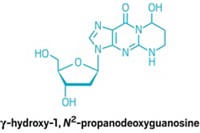Advertisement
Grab your lab coat. Let's get started
Welcome!
Welcome!
Create an account below to get 6 C&EN articles per month, receive newsletters and more - all free.
It seems this is your first time logging in online. Please enter the following information to continue.
As an ACS member you automatically get access to this site. All we need is few more details to create your reading experience.
Not you? Sign in with a different account.
Not you? Sign in with a different account.
ERROR 1
ERROR 1
ERROR 2
ERROR 2
ERROR 2
ERROR 2
ERROR 2
Password and Confirm password must match.
If you have an ACS member number, please enter it here so we can link this account to your membership. (optional)
ERROR 2
ACS values your privacy. By submitting your information, you are gaining access to C&EN and subscribing to our weekly newsletter. We use the information you provide to make your reading experience better, and we will never sell your data to third party members.
Analytical Chemistry
New chemicals add concern over e-cigarettes’ health impact
Two potential carcinogens detected for the first time in electronic cigarette vapor and liquid
by Deirdre Lockwood
August 2, 2016

Two new chemicals of concern have been connected to electronic cigarettes: Glycidol, a probable carcinogen, is found in e-cigarette vapor; and propylene oxide, a respiratory irritant and possible carcinogen, is found in the flavored liquid heated by the device to produce the vapor. Hugo Destaillats of Lawrence Berkeley National Laboratory and his colleagues also confirmed the presence of the probable carcinogens formaldehyde and acetaldehyde, as well as the strong respiratory and eye irritant acrolein, in the vapor (Environ. Sci. Technol., DOI: 10.1021/acs.est.6b01741).

Notably, the researchers conclude that several of these compounds come from heating the liquid’s solvents, propylene glycol and glycerin. Glycidol, acrolein, and formaldehyde are thermal by-products of glycerin, and propylene glycol degrades into acetaldehyde and formaldehyde.
The team tested two different brands of e-cigarettes with three different liquids, analyzing the liquid and vapor using gas chromatography-mass spectrometry and high-performance liquid chromatography. Propylene oxide was not detectable in the vapor in their HPLC analysis, but because it was found at relatively high levels in the liquid, the researchers speculate that it may be present in the vapor.
Several factors increased the amount of thermal degradation products delivered per puff, including repeated puffs within a half hour and increasing the e-cigarette voltage, both of which result in heating the liquid at a higher temperature. “As you increase the temperature, the amount of acrolein formed increases almost exponentially,” Destaillats says—by an order of magnitude for a voltage increase from 3.3 to 4.8 V. Minimizing the voltage could help e-cigarette users limit their exposure to these compounds, he says.
Most compounds of concern were detected at 0.3 to 70 μg per puff. The researchers estimate that e-cigarettes emit a quarter or less acrolein than a conventional cigarette for the equivalent number of puffs. However, the team’s calculations also indicate that at least two compounds in e-cigarette vapor exceed limits for chronic exposure—both secondhand and for vapers themselves—set by the California Office of Environmental Health Hazard Assessment by up to an order of magnitude or more, Destaillats says. The team’s conclusions on health implications will appear in a forthcoming paper.




Join the conversation
Contact the reporter
Submit a Letter to the Editor for publication
Engage with us on Twitter